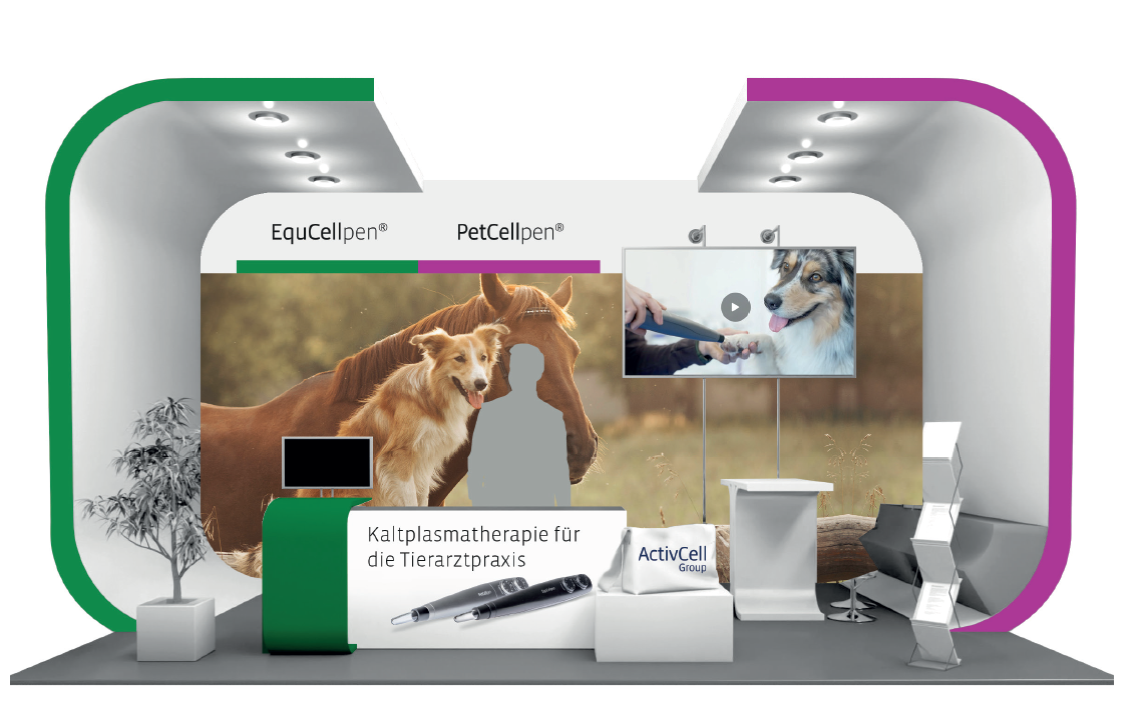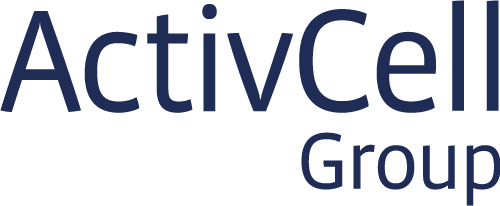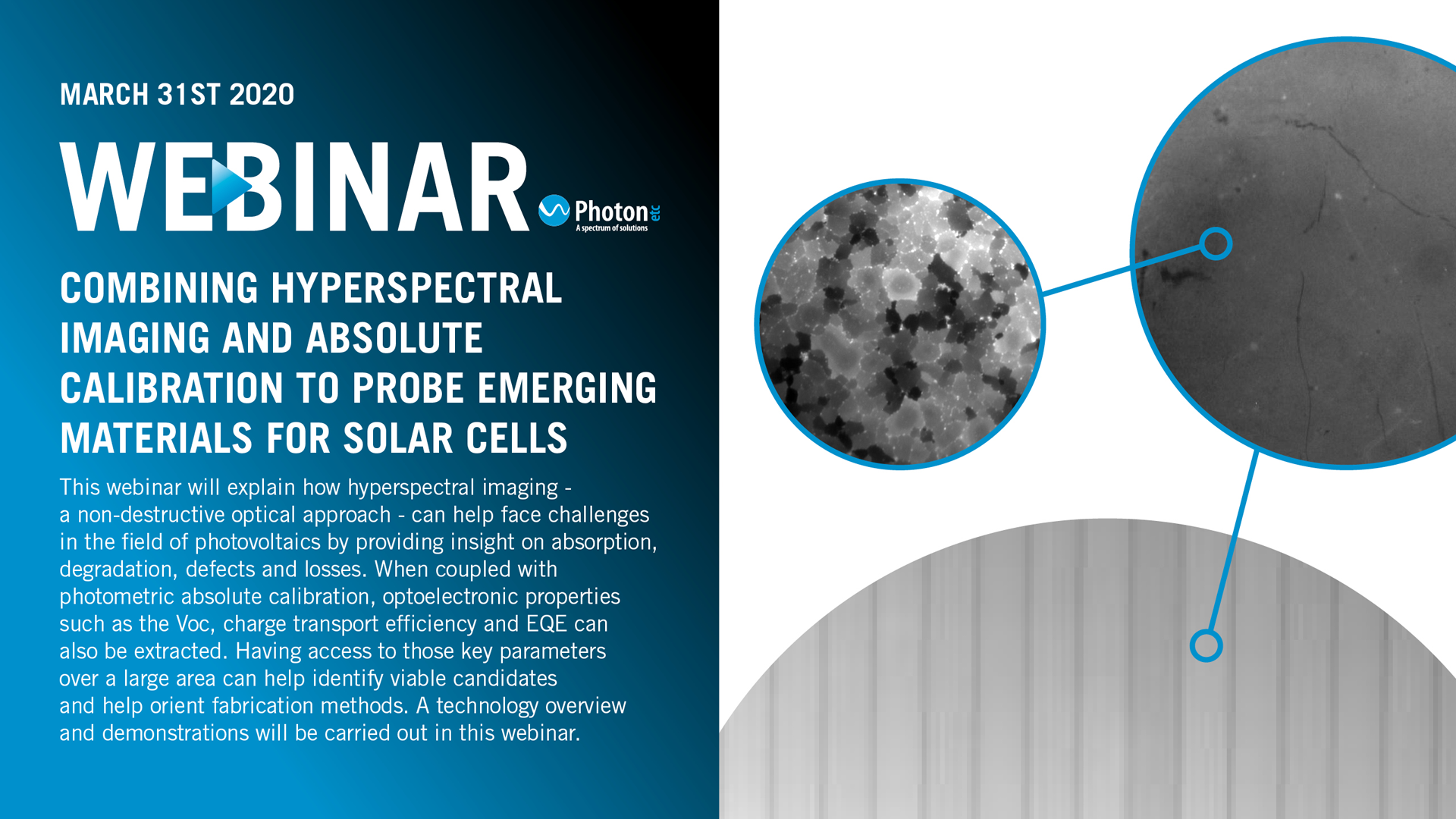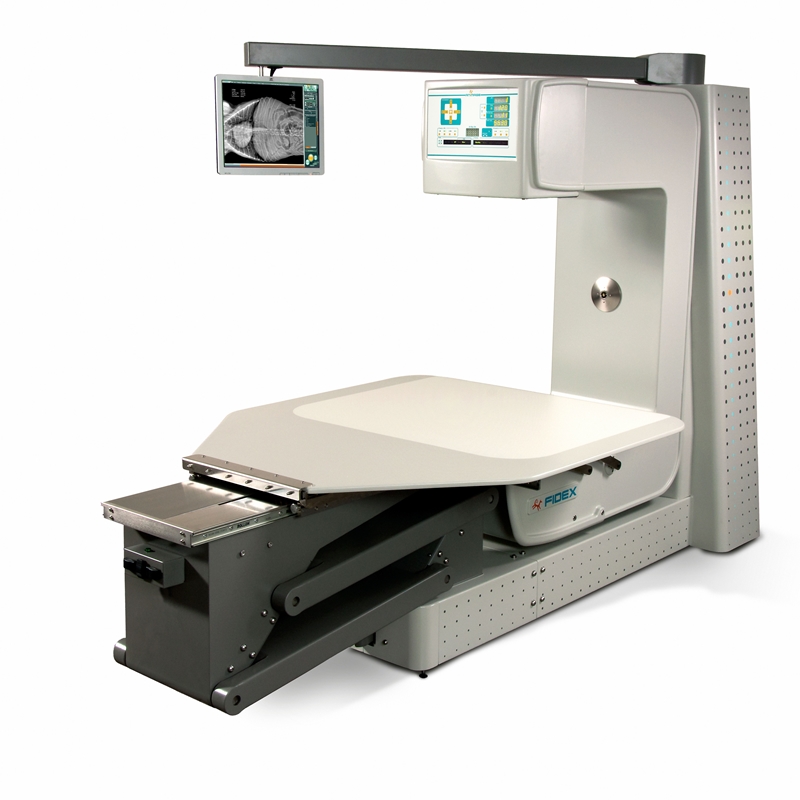Pressemitteilung, 31.05.2022
Einladung zum Deutsche Vet 10/11.06.2022, Koelnmesse, Koeln : Modernste Kaltplasmatherapiegeräte für Kleintiere, Reptilien, Vögel, Pferde und Nutztiere

Die Kaltplasmatherapie gewinnt einen immer größeren Stellenwert in Tierarztpraxen und -kliniken als auch in der tiermedizinischen Physiotherapie sowie in Tierheilpraxen. Diese physikalische Therapie ist heute dank der tragbaren kabellosen Geräte PetCellPen und EquCellPen der ActivCell Group einfach und wirtschaftlich anzuwenden.
Die effiziente Desinfektion von infizierter Haut und Wunden kennt keine Resistenzproblematik und stellt daher eine sinnvolle und für das Tier schonende Alternative zum Antibiotika-Einsatz dar. Weitere wichtige Anwendungsgebiete sind die Orthopädie sowie Physiotherapie.
Neben den zahlreichen therapeutischen Vorteilen zeichnen sich PetCellPen und EquCellPen u.a. durch folgende Attribute aus:
– keine Spacer (Verbrauchsmaterialien), die nach der Anwendung ausgetauscht werden müssen
– Behandlungsdauer (Zeiteinstellung) sowie Einstellung der Behandlungsintensität flexibel wählbar
– kein On/Off Betrieb mit fixer Zeiteinstellung
– direktes Kaltplasma (dKAP) anstelle von Dünnschichtplasmaerzeugung (SMD)Dünnschichtplasma hat deutlich weniger Tiefeneinwirkung als direktes Kaltplasma (dKAP), was in Studien erwiesen ist.
– SMD Plasma zeigt im Bereich der Basalmembran oder tiefer gelegenen Gewebeschichten keine Zellbeeinflussung mehr. Aber für dKAP, wir AktivCell Group es verwendet, wird sogar eine verbesserte Permeabilität für Medikamente erreicht und auch Oxydative Wirkungen und Zellbeeinflussung sind nachweisbar bis zum Stratum Basale und darunter
– PetCellPen und EquCellPen sind zudem wesentlich vielseitiger einsetzbar und können punktuell konzentriert werden, was zu einer enorm gesteigerten Einwirkung und Tiefenwirkung führt
– selbst blaues Laserlicht erreicht nicht die gleiche Tiefenwirkung wie dKAP)
Herr Dr. med. vet. Michael Hiestand, ActivCell Group und Herr Dr. Peter Merz ,MD Innovation Tech GmbH, der deutsche Exklusivvertriebspartner, freuen sich auf Ihren Besuch auf unserem Stand Nr. 207.
Mehr Details erhalten Sie über MD Innovation Tech, Tel: +49 9233 7157745, email:: kaltplasmatherapie@md-innovationtech.com oder vet@md-innovationtech.com
In Deutschland und Tschechien werden die innovativen Kaltplasmapens exklusiv von der Fa. MD Innovation Tech GmbH, D-95659 Arzberg, vertrieben.
Kontaktdaten:
Tel. + 49 9233 7157745, Email: vet@md-innovationtech.com kaltplasmatherapie@md-innovationtech.com
https://md-https://md-innovationtech.com/de/kaltplasma-tiermedizin
Pressemitteilung, 18.10.2021
Einladung zum bpt-Kongress 2021 DIGITAL vom 28. Oktober
bis 03. November 2021

Dr. med. vet. Michael Hiestand von der ActivCell Group AG berät und informiert Sie anläßlich des diesjährigen digitalen btp Kongress 2021 über die neuen Kaltplasma Therapie Pens EquCellpen für Pferde und PetCellpen für Kleintiere.
Das in Studien belegte breite Wirkungsspektrum in Dermatologie, Orthopädie und Physiotherapie ermöglicht den täglichen Einsatz in der Pferde- und Kleintierpraxis. Durch die Wirkung gegen multiresistente Keime kann der Antibotikaeinsatz stark reduziert werden. Schmerzzustände z.B. bei Arthritis/Arthrose, Spondylose der LWS, etc. werden maßgeblich reduziert sowie muskuläre Blockaden der Wirbelsäule gelöst.
EquCellpen und PetCellpen sind die kleinsten kabellosen Kaltplasmageräte auf dem Markt. Sie ermöglichen eine einfache gefahrlose Handhabung ohne Hilfsmaterialien. Sie sind besonders effektiv durch die austauschbaren Elektroden. Die Pens sind Plasmaquelle und HF-Stromtherapiegerät in einem.
Dr. Michael Hiestand freut sich über Ihren Besuch auf dem virtuellen Messestand der Fa. ActivCell Group AG, um Ihnen die hocheffiziente derzeit noch wenig in der Tiermedizin verbreitete Technologie und deren Fallbeispiele näherzubringen.
PetCellpen Kleintiere – Ausgewählte Indikationen
- Dermatologie: Akne, Dekubitus, Demodex, Dermatomykose, Narben, Malassezie, Dermatitis, Pyodermie (Hotspots), Wundheilungsstörungen, Verbrennungen
- Orthopädie: Arthritis/Arthrose, Distensionen, Hyperextensiobnssyndrom, Myositis,
Spondylose der LWS, Tendinitis der Bicepssehne, Tendinitis des M. Supraspinatus - Physiotherapie: Muskuläre Blockaden der Wirbelsäule, Triggerpunkte, post-operative Regeneration, Hämatome, Muskelentspannung
EquCellpen Pferde – Ausgewählte Indikationen
- Dermatologie: Abrasion und Dekubitus, Mauke, Maulwinkelwunden, Narben, Satteldruck, Sattellageknoten, Sommerekzem, Wundheilungsstörungen, Verbrennungen
- Orthopädie: Arthritis/Arthrose, Desmitis des Fesselträgerursprungs (FTU/PSD), Desmitis Unterstützungsband, Kissing Spines, Sehnenläsionen (OBS/TBS), Tendinitiden
- Physiotherapie: Triggerpunkte, post-operative Regeneration, Hämatome, Muskelentspannung, muskuläre Blockaden der Wirbelsäule
In Deutschland und Tschechien werden
die innovativen Kaltplasmapens exklusiv von der Fa. MD Innovation Tech GmbH, D-95659 Arzberg, vertrieben.
Besuchen Sie uns auch auf unserem Stand Nr. 46 anlässlich des DVG Kongress 19./20.11.21 im Estrel Center in Berlin.
Kontaktdaten:
Tel. + 49 9233 7157745, Email: vet@md-innovationtech.com
https://md-https://md-innovationtech.com/de/kaltplasma-tiermedizin
Pressemitteilung, 08.10.2021
INNOVATIVE KALTPLASMA-THERAPIE-PENS FÜR DIE TIERMEDIZIN
MD Innovation Tech GmbH ist neuer Partner der schweizer ActivCell Group AG für den Vertrieb von mobilen KaltplasmaTHERAPIE-PENS in Deutschland und Tschechien

Die ActivCell Group AG ist ein dynamisches schweizer Unternehmen mit herausragender Kompetenz in der Plasmamedizin. Mit der Entwicklung und Herstellung innovativer, handlicher Kaltplasmatherapie-Pens fördert die ActivCell Group die Etablierung der Plasmamedizin als effiziente Behandlungsmethode im medizinischen Alltag. In Kooperation mit renommierten europäischen Technologieinstituten und Universitäten leistet die ActivCell Group AG einen wichtigen Beitrag zur Erforschung und Weiterentwicklung dieser zukunftsorientierten Therapieform in der Human- und Veterinärmedizin.
In der Medizin wird Plasma vor allem aufgrund seiner hervorragenden desinfizierenden sowie wundheilungsfördernden Eigenschaften genutzt. Die praxistauglichen mobilen Kleingeräte EquCellPen® für Pferde als auch PetCellPen® für Kleintiere sind nun für jede Tierarztpraxis verfügbar. Typische Indikationen für den Einsatz des EquCellPens® sind u.a. chronische Wunden an problematischen Stellen, Mauke oder lästige Bursitiden.
In der Kleintierpraxis kann der Pet Cellpen beispielsweise an entzündeten Liegeschwielen, Schwanzdrüsen, störenden Narben, Hotspots oder Perianalfisteln bei Hunden eingesetzt werden. Aufgrund der starken antiseptischen Wirkung ist ein Einsatz bei der Katze insbesondere bei Bissverletzungen oderfelinem Akne sinnvoll.
Informieren Sie sich über weitere Indikationen sowie Fallbeispiele unter
www.activcellgroup.com
www.md-innovationtech.com
oder besuchen Sie unseren Stand anläßlich des DVG Kongress vom 19.11.21- 20.11.21 in Berlin.

MD INNOVATION TECH GMBH – KLINGELBRUNNENSTRASSE 39 – D-95659 ARZBERG, news@md-innovationtech.com – www.md-innovationtech.com
Press Release May, 05, 2021
Webinar:
A novel global hyperspectral darkfield imaging technique
MAY 25 2021
In this webinar, Photon etc will present a novel global darkfield hyperspectral acquisition technique. Photon etc.’s LIMA system combines a Laser Line Tunable Filter, NKTP supercontinuum source and a research-grade microscope. ….
MD INNOVATION TECH GMBH – KLINGELBRUNNENSTRASSE 39 – D-95659 ARZBERG, news@md-innovationtech.com – www.md-innovationtech.com
Press Release February, 24, 2021
NEW VET-OCT OptiCAL coherence Tomography System
MD Innovation Tech GmbH offers the new ophthalmic OCT with versatility to work with animals in the lab, clinic and barns.
MD INNOVATION TECH GMBH – KLINGELBRUNNENSTRASSE 39 – D-95659 ARZBERG, news@md-innovationtech.com – www.md-innovationtech.com
Press Release March, 20, 2020
WEBINAR: HYPERSPECTRAL IMAGING AND ABSOLUTE
CALIBRATION FOR PHOTOVOLTAIC“
On March 31st 2020 will take place Photon etc.’s webinar probing emerging materials for solar cells by combining hyperspectral imaging and absolute calibration in microscopy and wide-field.
Photon etc. is represented by MD INNOVATION TECH GmbH, D-95659 Arzberg, www.md-innovationtech.com, in Germany, Austria, Switzerland, parts of South and East Europe.
MD INNOVATION TECH GMBH – KLINGELBRUNNENSTRASSE 39 – D-95659 ARZBERG
news@md-innovationtech.com – www.md-innovationtech.com
Press Release April, 15, 2019
FIDEX CT USER CONFERENCE FOR VETERINARIANS AND VETERINARY RADIOLOGISTS
The 2019 International Fidex CT User Conference will be held on July 4 to 7, in Turku, Finland and on Ǻland, Baltic Sea.
The conference is for those interested in veterinary cone beam CT, in particular using the Fidex machine. While the name of the conference is User Meeting, attendees do not need to have access to a Fidex scanner, but they should have interest in the clinical application of this instrument and its technology.
FIDEX-FS CT, DR, and Fluoroscopy Scanner has recently been launched by Annimage being represented by MD INNOVATION TECH GmbH, D-95659 Arzberg, www.md-innovationtech.com, in Germany.
MD INNOVATION TECH GMBH – KLINGELBRUNNENSTRASSE 39 – D-95659 ARZBERG
news@md-innovationtech.com – www.md-innovationtech.com
Press Release November 15, 2017
ZephIR cameras for scientific and industrial applications – COOLING SWIR SENSORS – Why a TE4 air-cooled camera?

BECAUSE OF THEIR LONG LIFETIME AND RELIABILITY, TE COOLED CAMERAS ARE THE
IDEAL TOOLS FOR INDUSTRIAL CONTINUOUS PROCESS CONTROL OR ANY OTHER
APPLICATIONS IMPLYING NON-STOP CYCLES OF OPERATION.
Dark current is a critical parameter when one is looking to acquire a scientific and/or industrial imaging camera, especially in the short-wave infrared (SWIR) region. Very careful attention must be paid to the cooling method used to optimize this parameter.
Multiple cooling technologies are available, each having certain benefits and drawbacks. In its new ZephIR line of SWIR cameras, Photon etc. uses a four stage thermoelectric(TE4) air-cooled system to enhance the sensitivity of its imaging sensors.
The ZepIR 2.5 and 2.9 are HgCdTe cameras sensitive in the 0.85 μm to 2.5 μm and 0.85 μm to 2.9 μm ranges respectively. With their integrated TE4 air-cooled systems, these cameras reach an operating temperature of -80 °C and possess dark currents of Me-p/s (ZephIR 2.5) and 340 Me-/p/s (ZephIR 2.9).
OVERVIEW OF COOLING METHODS – Thermoelectric Cooling
Thermoelectric (TE) stages are solid-state devices composed of two differents faces. Those stages uses Peltier effect to generate a temperature difference between the two faces. Semiconductors with different electron densities, n-type and p-type, are placed in series and connected with a conducting material on each side. The passage of an electrical current through the junction induces a heat flow from one face to the other, creating a cold and a hot side. The cold face absorbs heat which is carried to the other side where the heat sink is located. TE stages are usually connected side by side and sandwiched in two insulators. Water or air cooling is typically used to dissipate the heat accumulated in this process. The temperature that can be reached by
TE coolers is related to the number of stages being used. Hence, for more effective cooling, it is possible to stack several stages. This is the case of Photon etc’s SWIR sensors, where four thermoelectric stages are cascaded together to lower the temperature. With four stages, a ΔT* of 120 °C can be reached. This results in a detector operating temperature of -80 °C (193 K) with proper heat extraction, at 25 °C ambient temperature.
STIRLING COOLING
Stirling coolers based devices operate on a closed Stirling cycle where a nearly ideal gas (usually helium) is being repeatedly compressed and expanded. In order to obtain the change in pressure and temperature of the gas, two pistons are required: a displacer which put alternatively the gas in contact with a cold and hot reservoir and a working piston which is moved by the expansionand compression of the gas. A regenerator is also required and act as an internal heat exchanger. Following the Ideal Gas Law, heat from the surrounding is being absorbed by the expanded gas during the expansion which makes it colder. When the gas is being compressed, heat is ejected from the gas to the atmosphere.
Four steps are needed in an ideal cycle:
1. Isothermal compression: heat ejected.
2. Isochoric process: the system is kept a constant volume. Heat is rejected to the regenerator.
3. Isothermal expansion: heat is absorbed by the gas.
4. Isochoric process: the system is kept a constant volume. Heat is absorbed from the regenerator. Stirling cooled detectors can reach -210 °C (63 K).
LIQUID NITROGEN COOLING
Detectors can also be cooled with liquid nitrogen to reach -196 °C (77 K). In liquid nitrogen cooled system, the detector is placed in a cryostat that holds a dewar where the liquid nitrogen is stored. Different type of detector chamber are available. The detector can be connected to a copper cold finger inserted in the dewar. The finger carry the heat from the detector to the liquid nitrogen tank.
WHY A TE4 AIR-COOLED SYSTEM?
Each cooling method possess its advantages and downsides, the application will dictate the appropriate approach. Liquid nitrogen is used, for example, with MCT sensors working in the long wavelength infrared (LWIR – 8-15 μm) range to reduce thermal noise. It is also used for application requiring high cooling capacity and stability. Liquid nitrogen cooled sensor also possess long lifetime and relatively low initial cost. The main disadvantage is the regular need of liquid nitrogen supply, the limited autonomy and the time required to stabilize the temperature.
MAIN ADVANTAGES OF TE COOLED AIR SYSTEM
› Compact
› No moving parts
› Highly reliable
› Long lifetime
› No maintenance
› Low dark current
› Low readout noise
LONG LIFETIME
Unlike Stirling coolers, TE stages do not possess moving parts, which is a significant advantage for the overall durability and maintenance needs of the camera. No moving parts also means no vibration, which is perfectly suited for high magnification SWIR microscopy. Because of their long lifetime and reliability, TE cooled cameras are ideal for industrial process control or any other applications implying long cycles of operation.
COMPACT
Their small size is ideal to manufacture compact sensors that can be easily installed in either academic laboratories or industrial
environments.
USER-FRIENDLY
An air-cooled system does not require a continuous flow of cold water in the camera. This greatly facilitates its integration in various environments.
LOW DARK CURRENT
The small bandgap of InGaAs (~0.75 eV at room temperature) and even smaller bandgap of HgCdTe (~0.15-0.43 eV) imply that electrons will be more likely to reach the conduction band and contribute to the dark current. For this reason, sensors based on InGaAs or HgCdTe possess a high intrinsic dark current at room temperature. For example, the dark current of InGaAs-based sensors approximately triples with every 10 ˚C increase. Cooling these sensors is crucial to attaining a good dynamic range and higher sensitivity. Photon etc. has thus integrated a four stage Peltier module into their cameras reaching-80 °C, a temperature
which significantly lowers the dark current of the camera. The ZephIR 1.7 dark current is typically 300 e-/pix/sec. Stirling cooling also provides really low temperature and offers a good solution for applications requiring long acquisition time with low dark current or low power consumption. Stirling cooling is efficient and compact however, it induces vibration, it has a limited lifetime and high initial cost to which rework cost need to be added later on. In industries where long life time and easy maintenance are essential, thermoelectric cooling seems to be the best suited option. It is also vibration-less and user friendly when compared to Stirling and LN2 cooling respectively, two advantages that are also often mandatory in advanced scientific imaging. This is why Photon etc. decided to go in this direction for its ZephIR line of cameras.
CONCLUSION
The suitable cooling method strongly depends on the application. ZephIR TE4 air-cooled systems are best suited for industrial application as well as demanding scientific imaging. This cooling system is more reliable, simpler and less expensive than other available cooling technologies. The TE4 cooled ZephIR InGaAs and HgCdTe are ideal cameras for state-of-the-art scientific research and a wide variety of industrial applications. They are perfectly suited for hyperspectral microscopy, fast broadband imaging, line-scanning systems, industrial sorting and quality control, thus broadening Photon etc’s scientific solutions to the
SWIR spectral window.
Photon etc. is represented by MD INNOVATION TECH GmbH, D-95659 Arzberg, www.md-innovationtech.com, in Germany, Austria, Switzerland, parts of South and East Europe.
MD INNOVATION TECH GMBH – KLINGELBRUNNENSTRASSE 39 – D-95659 ARZBERG
news@md-innovationtech.com – www.md-innovationtech.com
Press Release September 30, 2017
ZephIR – A New Camera Against Cancer

In the fight against cancer, researchers can now count on a new weapon in the truest sense of the word:
The brand-new ZephIR infrared camera, developed by our partner Photon Etc, is precise and efficient enough to see through the skin. The ZephIR infrared camera offers a higher resolution than magnetic resonance imaging, does not require manipulation of radioactive products like other medical imaging techniques and is less invasive.
Infrared light penetrates a few centimeters into the skin. One or two centimeters are still very good to see. At first sight this seems to be little, but it is already sufficient to help researchers in preclinical studies in mice. The small size of the rodents makes it possible to examine some of their organs directly.
In humans, the ZephIR camera could be used in combination with nanoprobes. For example, a customer has developed nanoprobes that are not yet approved on the market. If these nanoprobes are placed in the blood, the color changes, depending on the concentration of the microRNA that surrounds them. The presence of microRNAs may give appropriate evidence of cancer; so that the zephyr camera can detect the disease by observing the blood in a blood vessel near the body surface.
One of the largest customers of this highly efficient Zephir infrared camera is the cancer research center in New York.
A NEW MARKET
In the medium term, the Zephir camera can be used to analyze biopsies in immunotherapeutic treatments. These treatments must be calibrated for each individual case, based on the various biological information collected by means of biopsies. However, it is often difficult to obtain all the necessary information using the current equipment. The ZephIR camera allows up to 17 colors (frequency bands) during an analysis – in comparison, the well-known competitors offer only 7 colors.
MD INNOVATION TECH GMBH – KLINGELBRUNNENSTRASSE 39 – D-95659 ARZBERG
news@md-innovationtech.com – www.md-innovationtech.com




